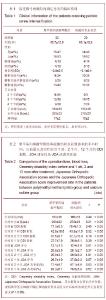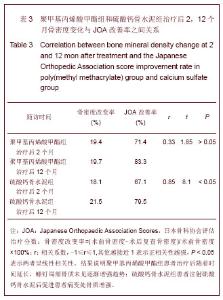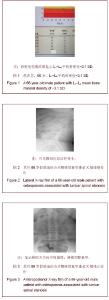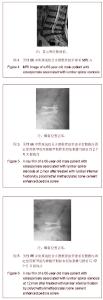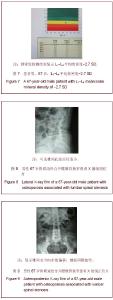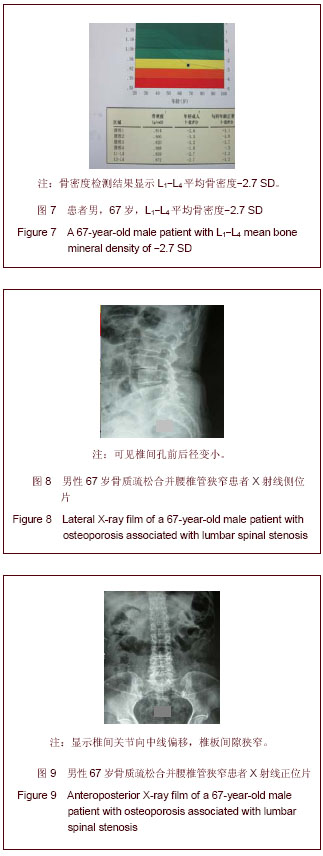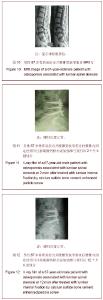| [1] 黎逢峰,方煌.磷酸钙骨水泥强化螺钉固定的研究进展[J].中华创伤骨科杂志,2004,6(6):685-687.[2] 何斌,王云华,袁同洲,等.MIIGX3强化椎弓根螺钉固定的生物力学研究[J].生物医学工程研究,2008,27(2):97-98.[3] Reitman CA,Nguyen L,Fogel GR.Biomechenical evaluation of relationship of screw pullout strength ,insertional torque and bone mineral density in the cervical spine. J Spinal Disord Tech. 2004;17(4):306-311.[4] Urban RM,Turner TM,Hall DJ,et al.Effect of altered crystalline structure and increased initial compressive strength of calcium sulfate bone graft substitute pellets on new bone formation.Orthop.2004;27(1):s113-s118.[5] Watson JT. The use of au injectable bone graft substitute in tibial metaphyseal fractures. Orthop.2004;27(1):103-107.[6] 夏军,杨丰建,陈杰.可注射型骨移植替代物的研究进展[J].中国矫形外科杂志,2006,14(4):297-300.[7] Gitelis S, Piasecki P,Tumer T,et al.Use of a calcium sulfate-based bone graft substitute for benign bone lesions. Orthopedics.2001;24(2):162-166.[8] 宁志杰,奥斯汀.骨移植替代物[J].中国矫形外科杂志,2000,7(6): 593-594.[9] Daculsi G.Biphasic calcium phosphate concept applied to artificial bone,implant coating and injectable bone substitute. Biomaterials.1998;19(16):1473-1478.[10] Bennett S, Connolly K, Lee DR, et al.Initial biocompatibility studies of a novel degradable polymeric bone substitute that hardens in situ.Bone.1996; 19(1):101-107.[11] 刘宏健,杜靖远.椎体成形术和后凸成形术:充填材料和生物力学[J].中华创伤骨科杂志,2004,6(4):446-450.[12] 刘建青,沈炳华,杜伟,等.短节段双皮质椎弓根螺钉联合硫酸钙骨水泥治疗骨质疏松椎体爆裂骨折[J].中华临床医师杂志:电子版, 2011,5(4):1114-1117.[13] 徐炜,沈忆新,范志海,等.注射型硫酸钙椎体成形结合椎弓根内同定治疗胸腰椎骨折[J].中国矫形外科杂志,2008,16(24):1860- 1862.[14] 王生介,谭红略,赵金坤,等.后路椎弓根钉固定结合硫酸钙骨水泥椎体成形术治疗新鲜胸腰椎压缩性骨折[J].颈腰腿杂志,2010, 31(3):201-204.[15] Ming LF, Hui LS, Yi MY, et al. Analysis of factors related to prognosis and curative effect for posterolateral fusion of lumbar low-grade isthmic spondylolisthesis. International Orthopaedics.2009;33(5):1335-1340.[16] Yi XD,Lu HL,Gong SY.Effect of pedicle screw fixation with bone cement in lumbar. China J Surg.2004;42(23): 1427-1429.[17] Bautucci EJ,Gonzalez MH,Cooperman DR.The effect of adjunctive methylmethacrylate on failures of fixation and function in patients with intertrochanteric factures and osteoporosis. J Bone Joint Surg(Am).1985;67(7):1094-1107.[18] Liebschner MA, Rosenberg WS, Keaveny TM. Effects of bone cement volume and distribution on vertebral stiffness after vertebroplasty. Spine.2001;26(14):1547-1554. |
